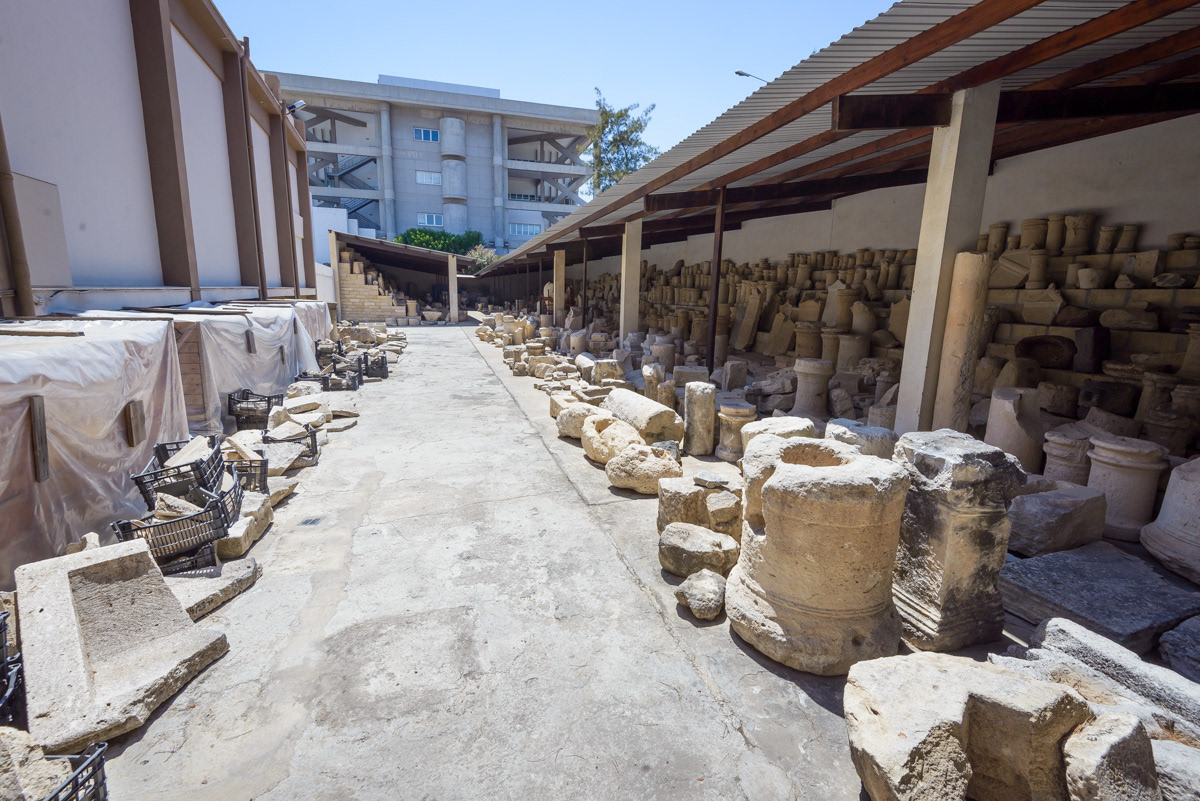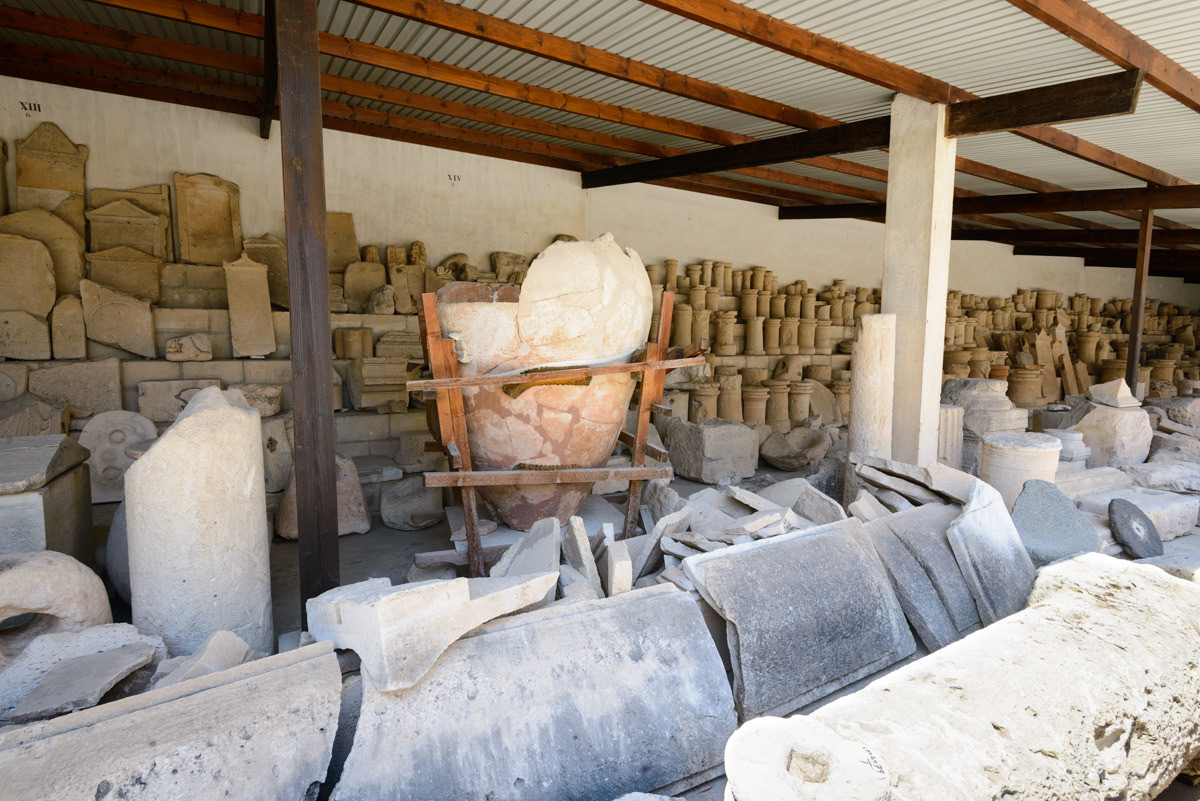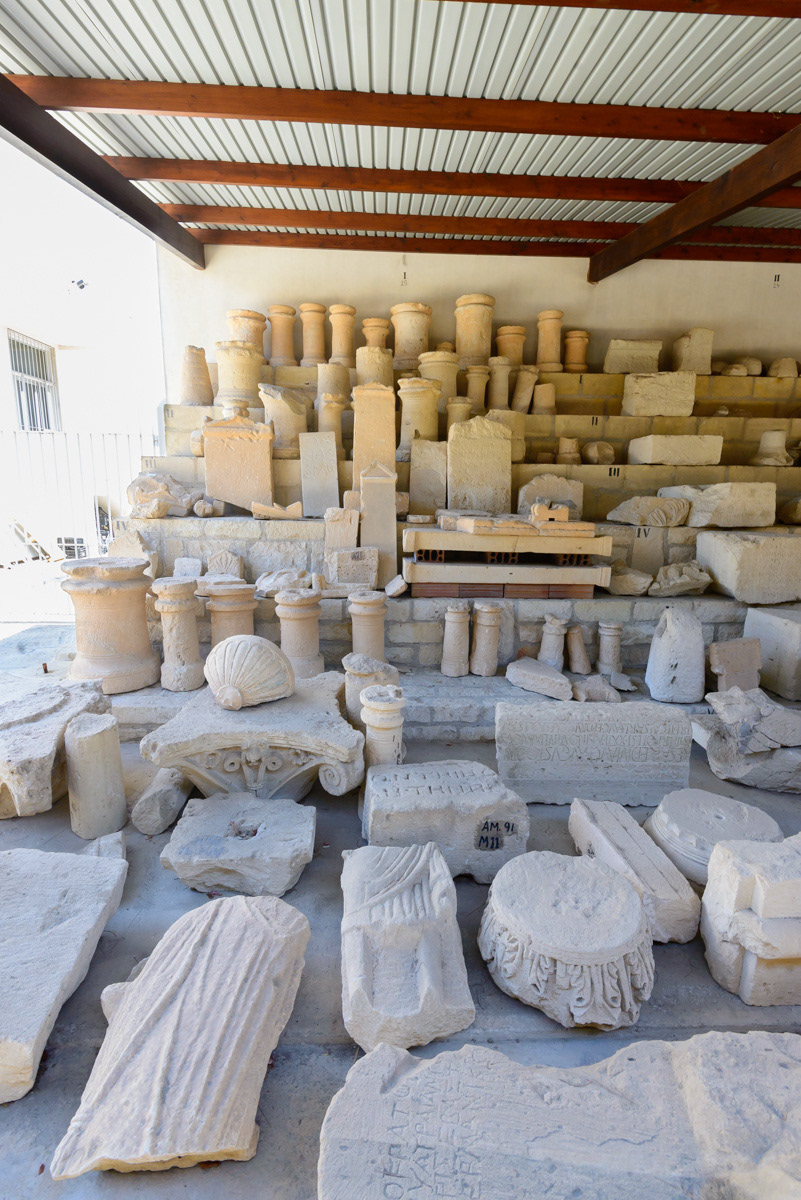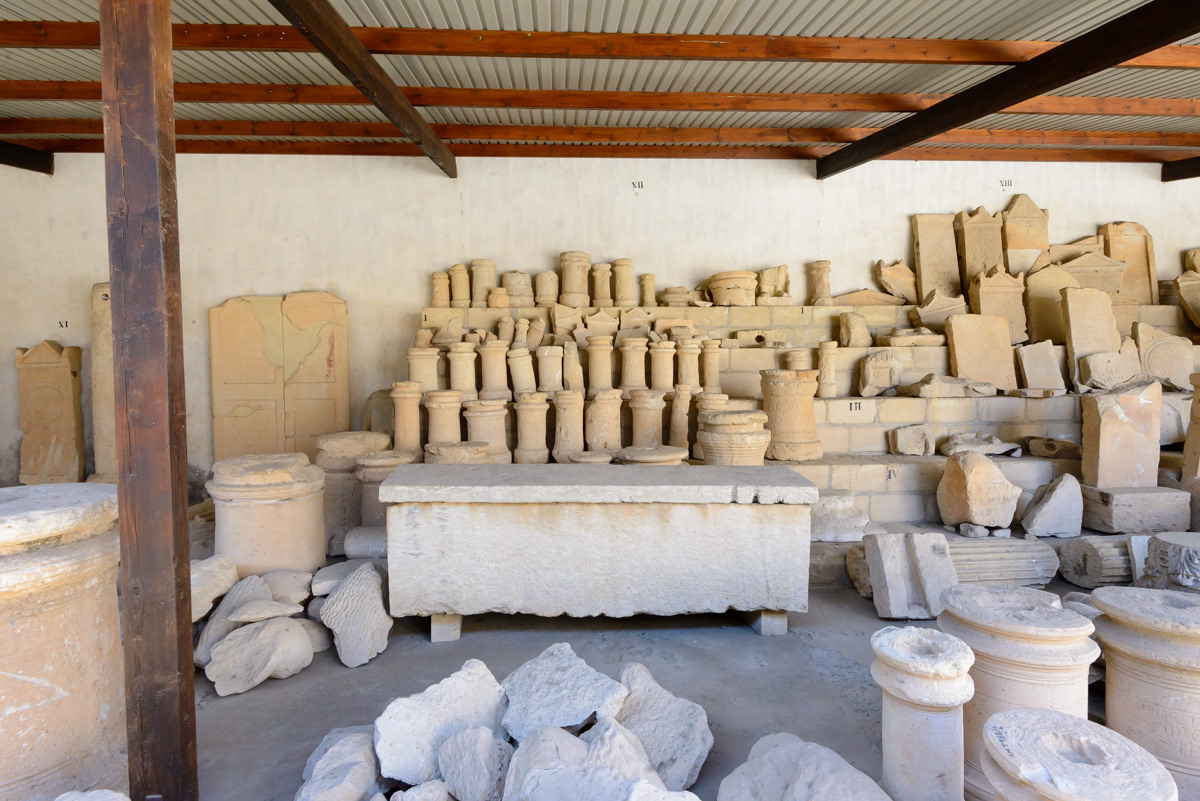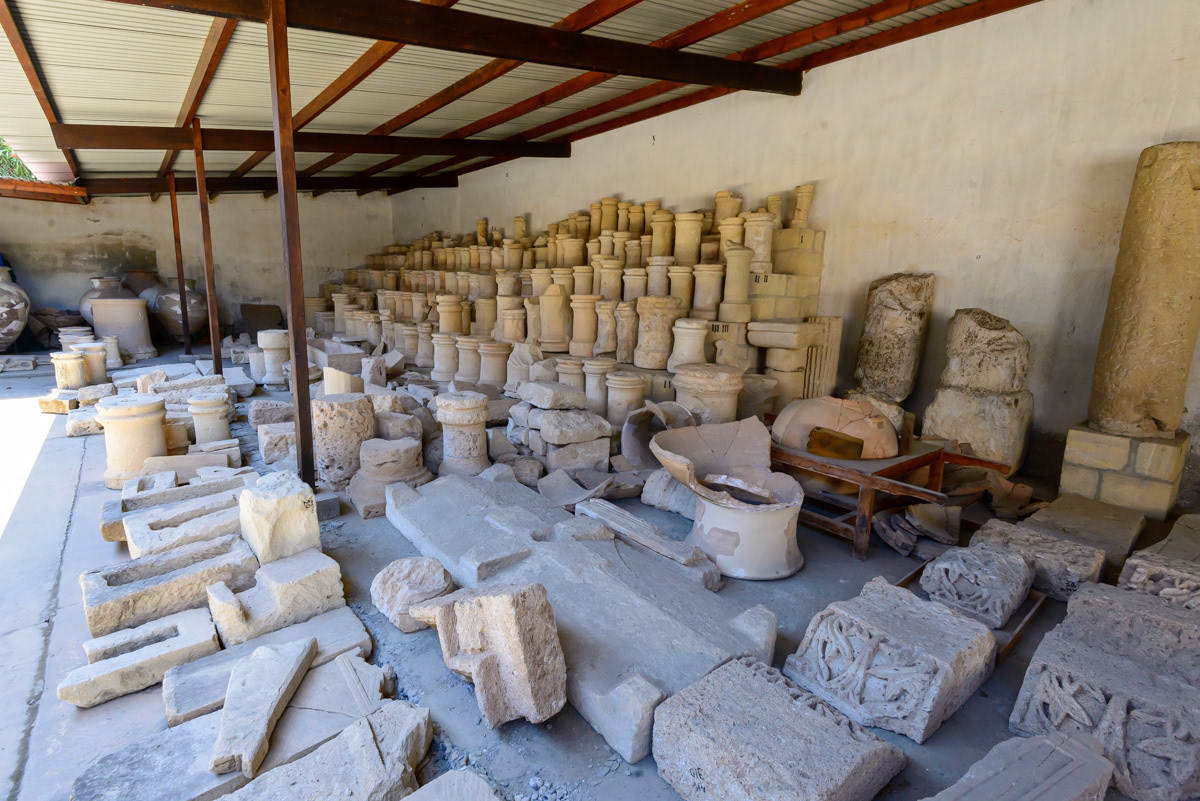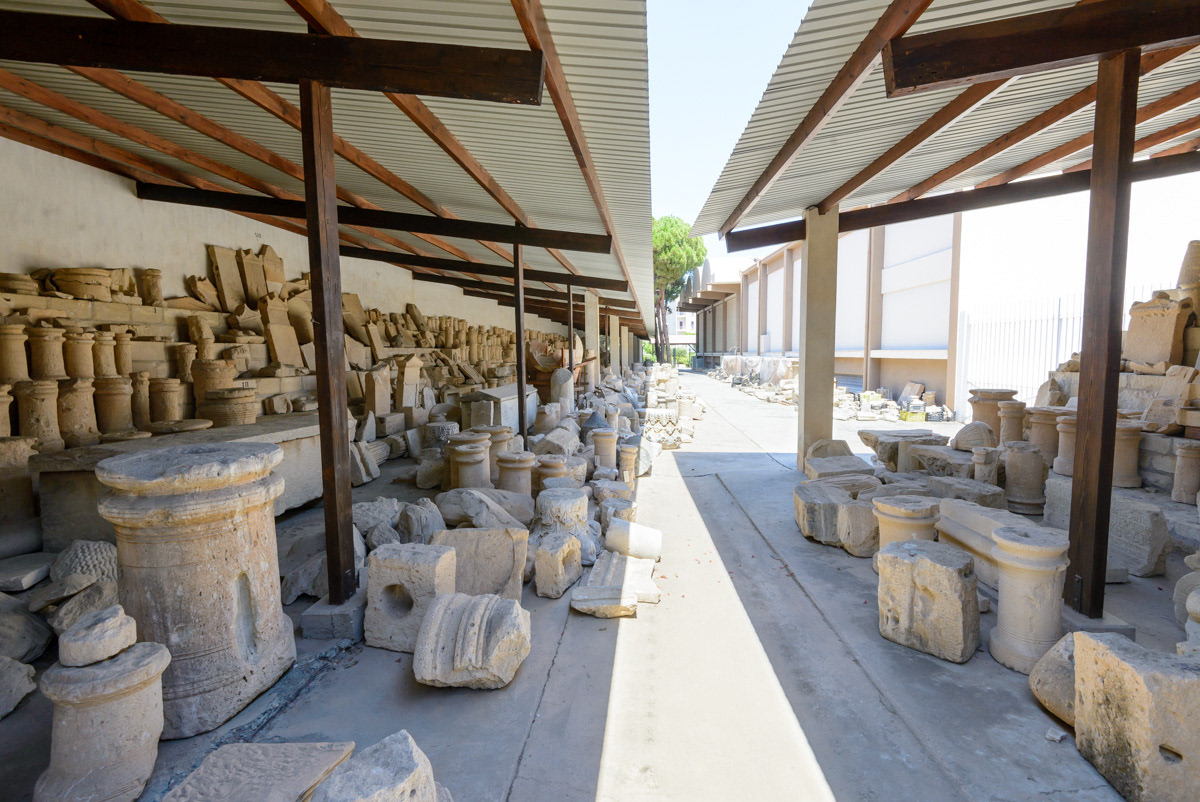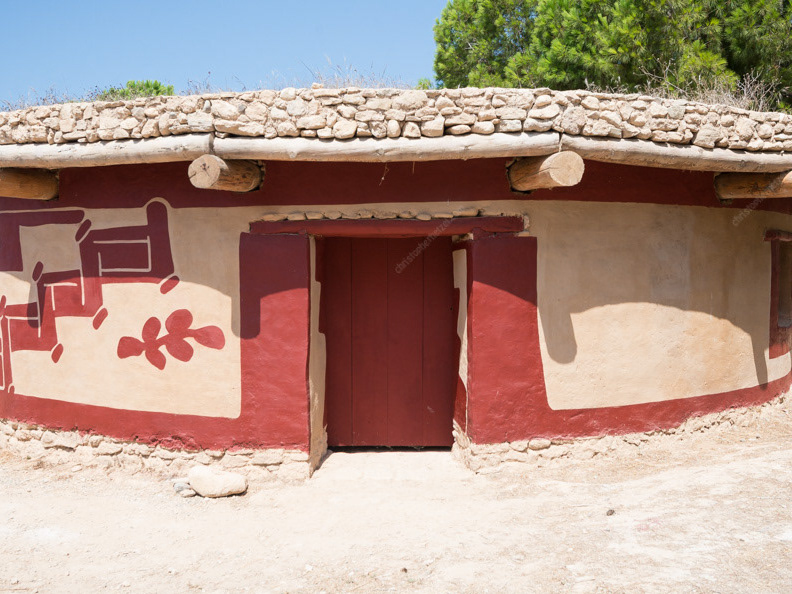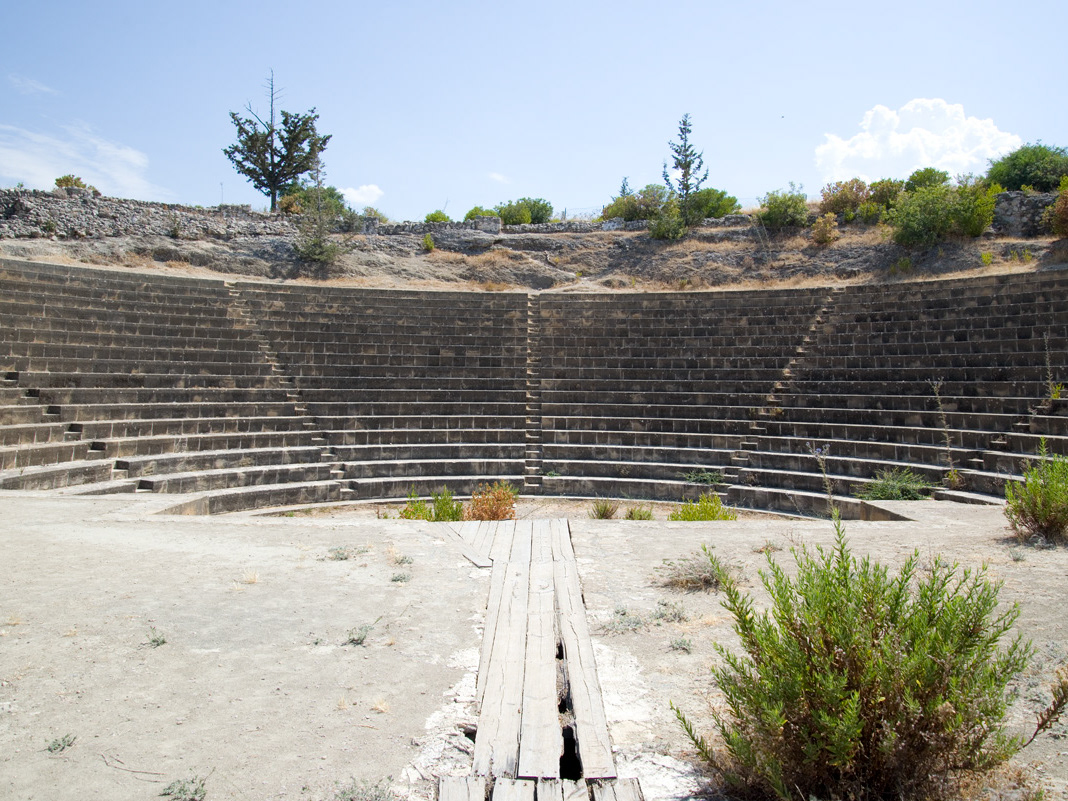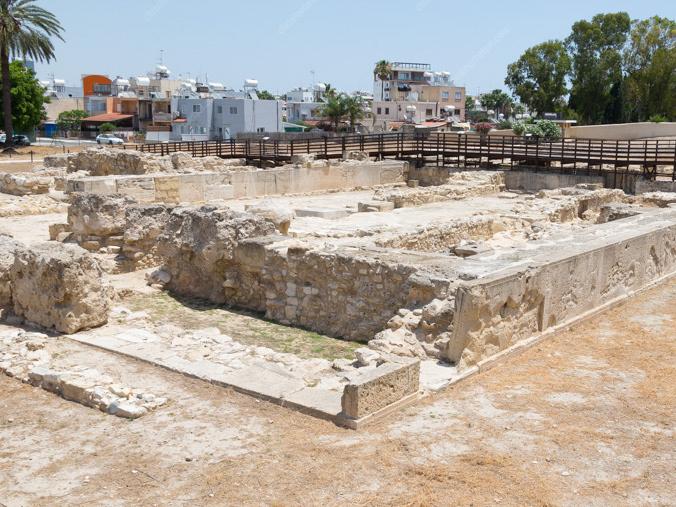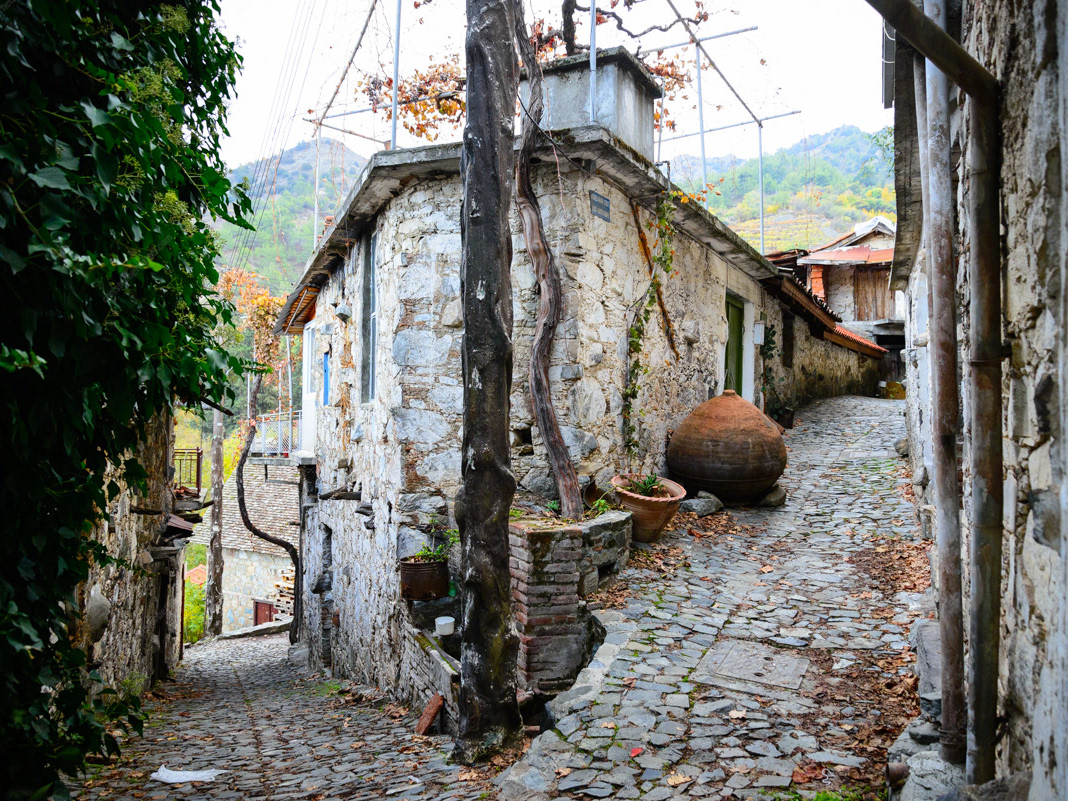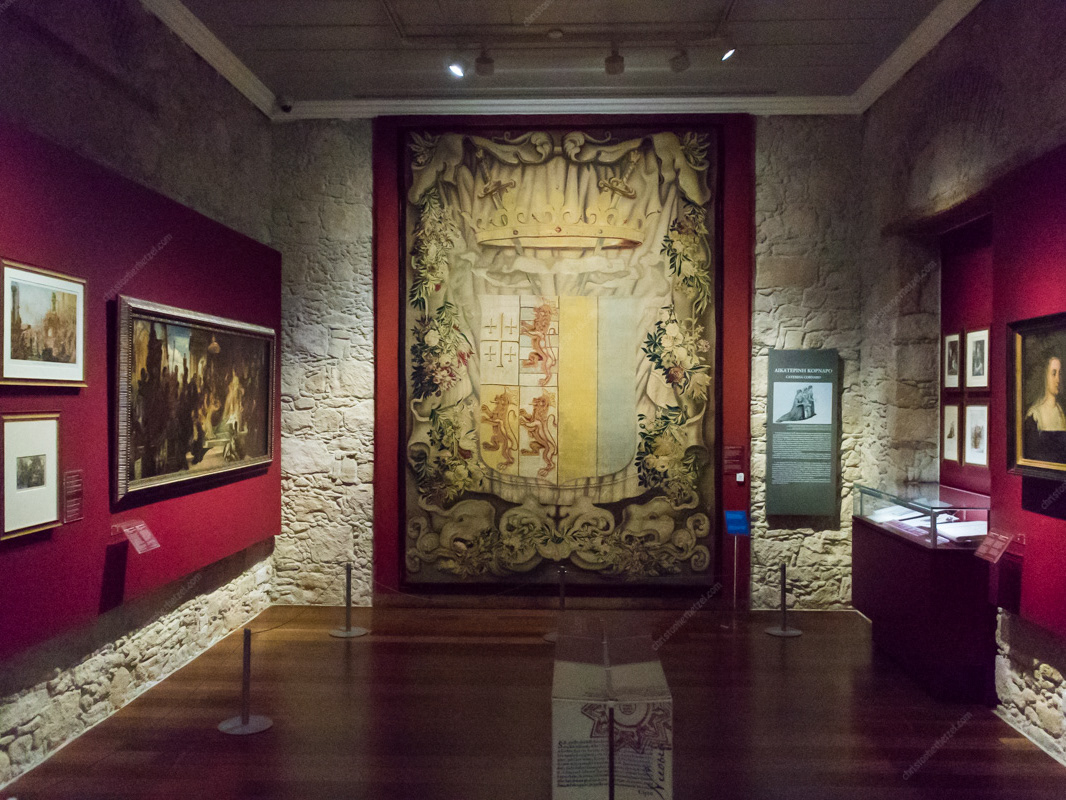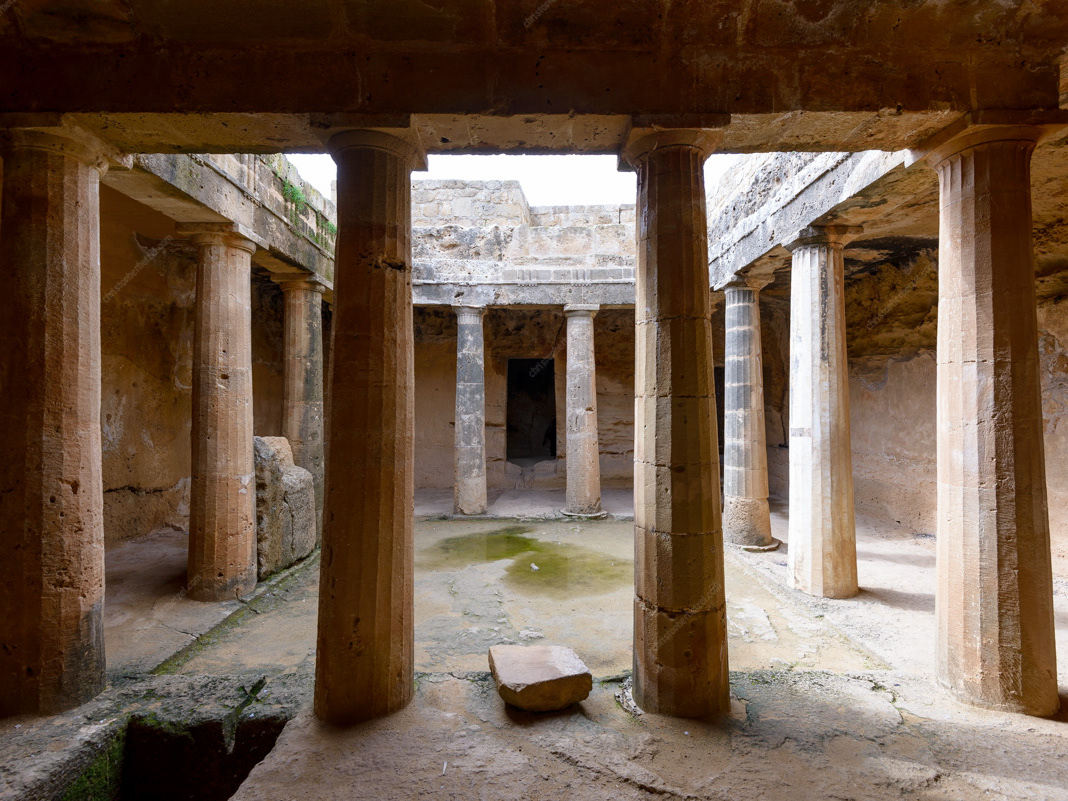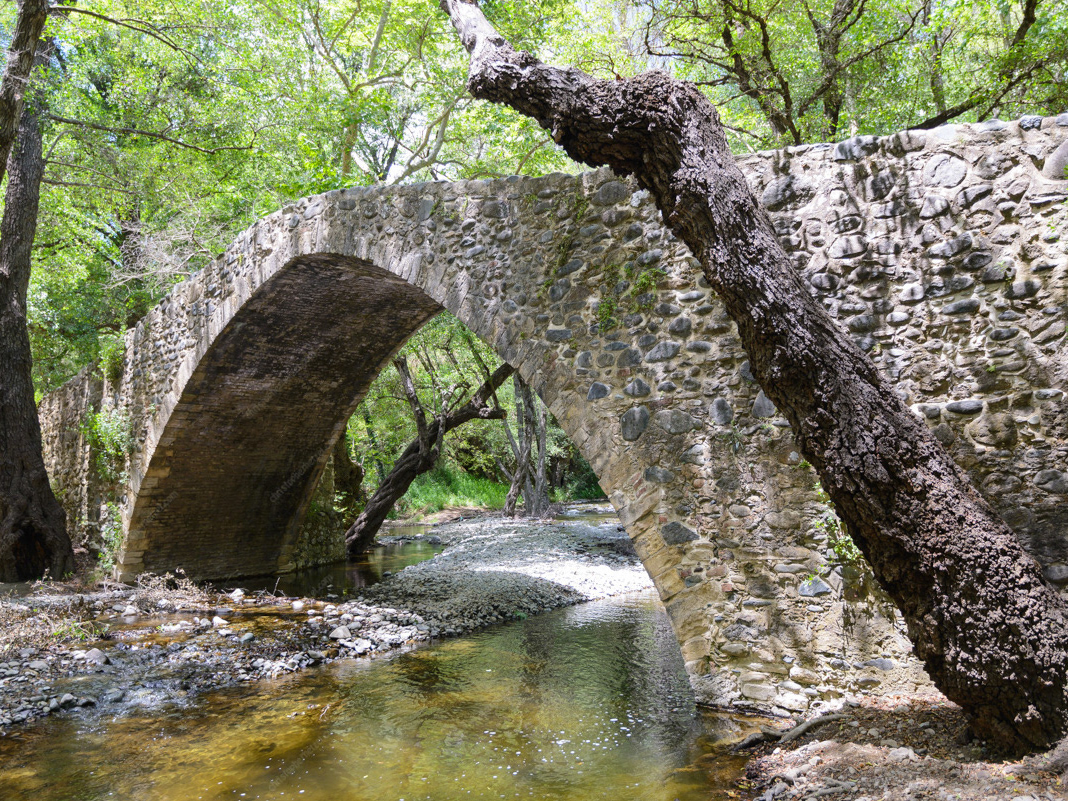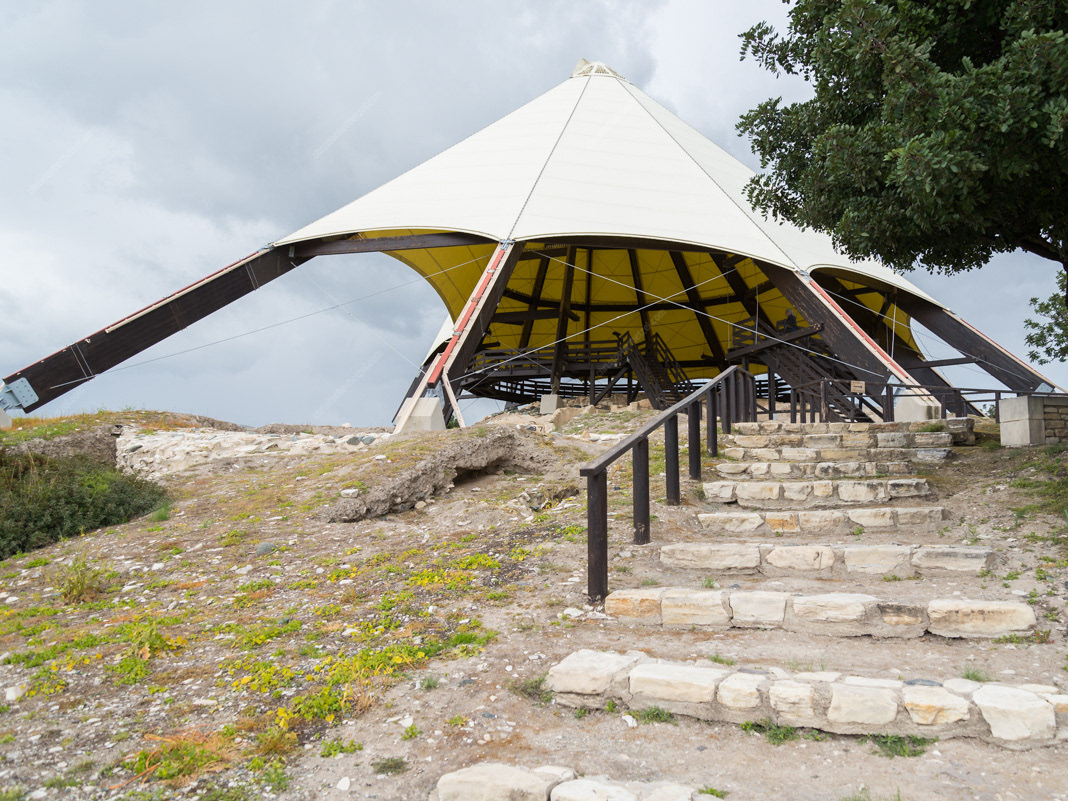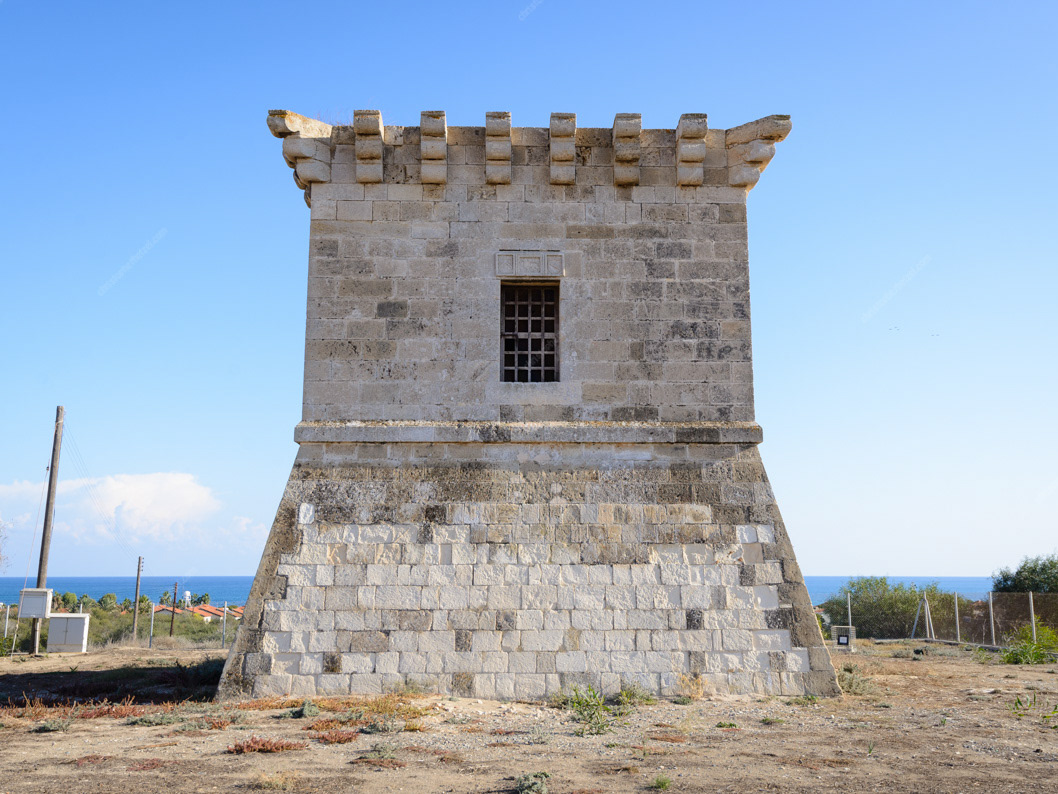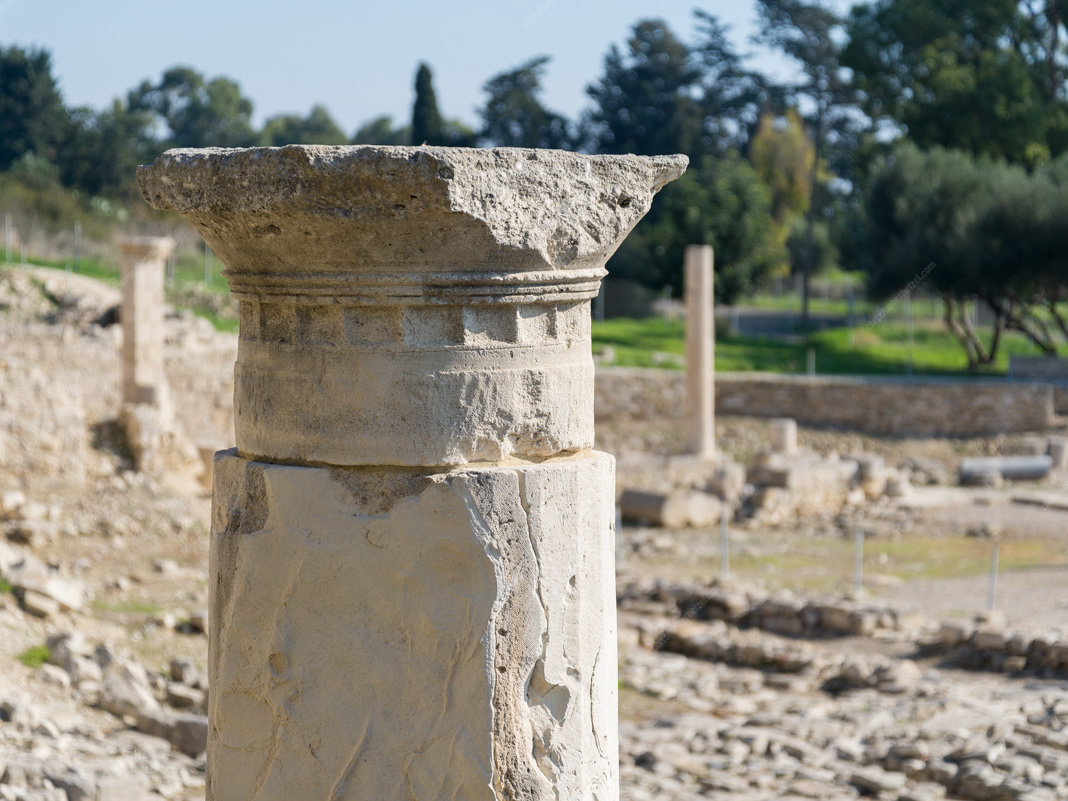The Archaeological Museum of the Lemesos District, in Limassol, Cyprus, features a large collection of antiquities from a range of historical periods. Operated by Cyprus' Department of Antiquities, the museum functions as the repository for all things archaeological, found in the Lemesos region in the south central part of the island, and covering the development of Cyprus from the 9th millennium BC to the end of the Roman period in the 7th century AD. A series of exhibition spaces feature collections of: pottery, coins, jewelry, copper tools and objects, and stone sculptures, tombstones, and architectural elements. At present (2020), the museum also hosts an excellent, special exhibit on the ancient city of Amathus.
Pottery Collection
Presented here are images of pottery specifically from the Cypro-Geometric (1050 - 750 BC) and Archaic Periods (750-475 BC) recovered from various places in Cyprus. Examining the details of each piece, it's amazing to think that each dot and line was hand painted by someone as much as 3,000 years ago, not to mention creation of the pottery itself.
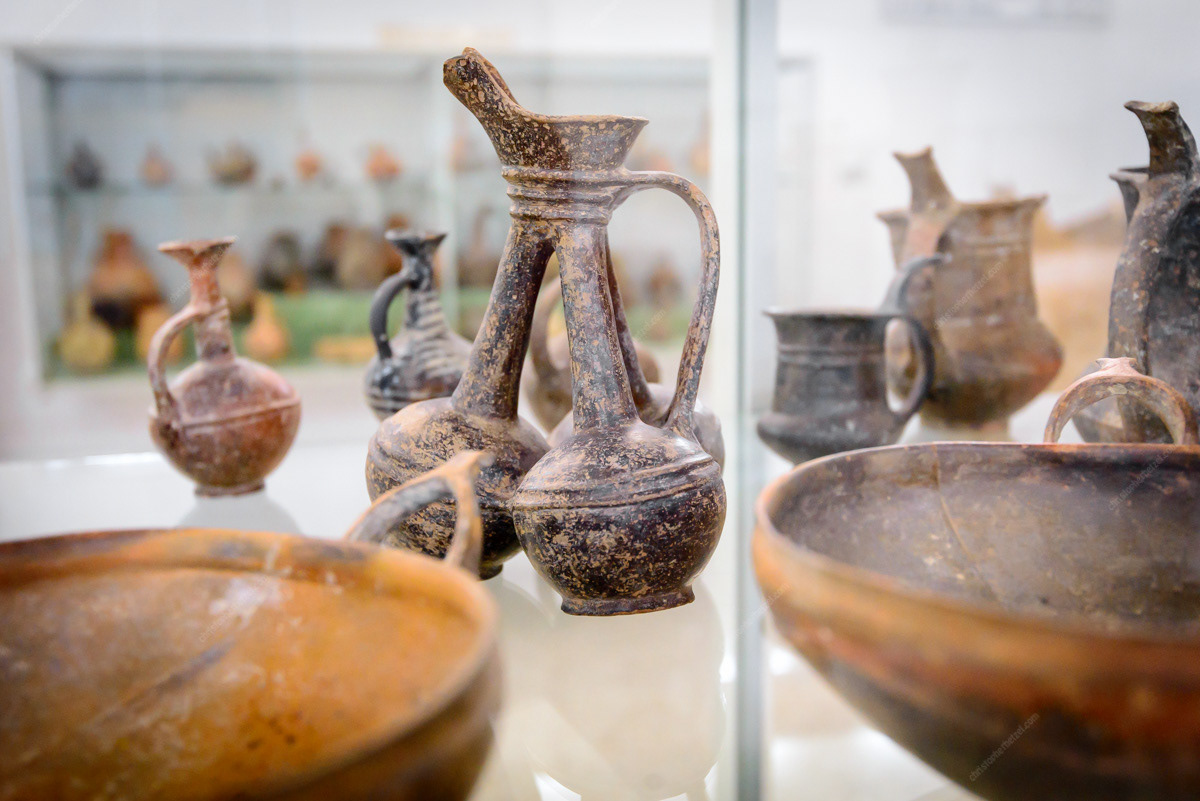
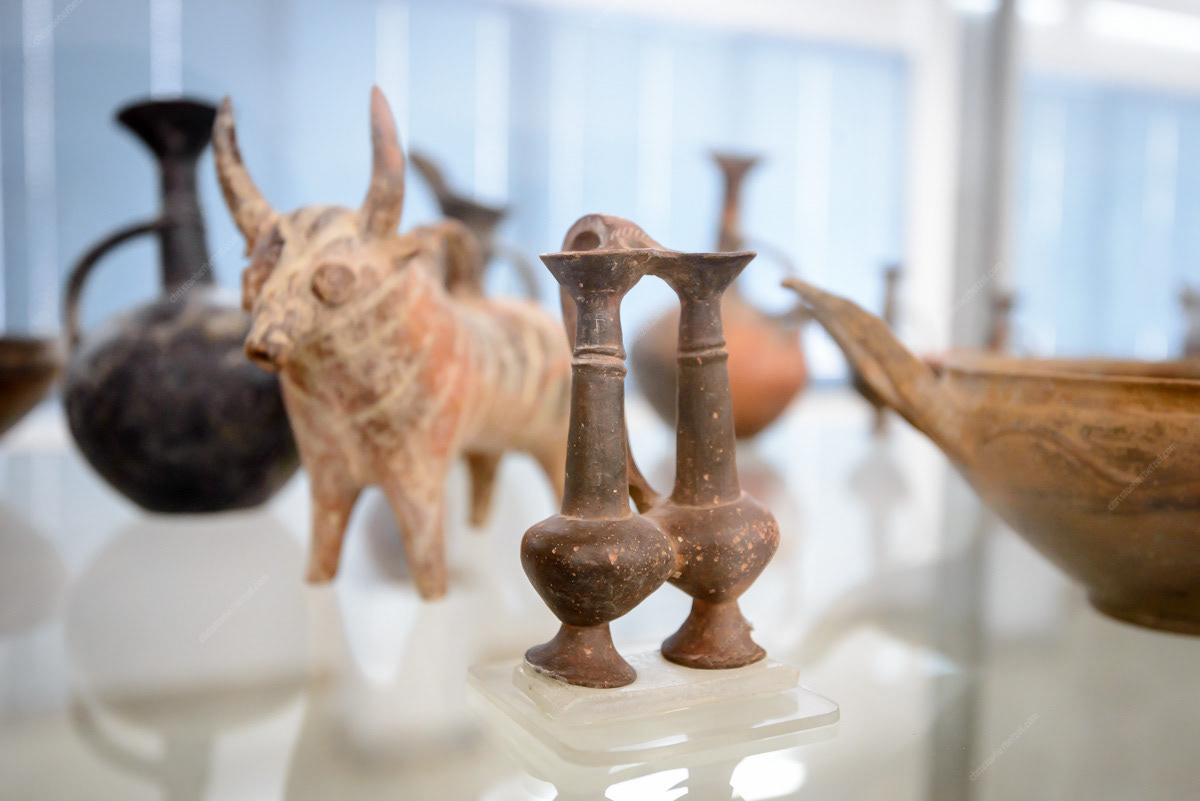
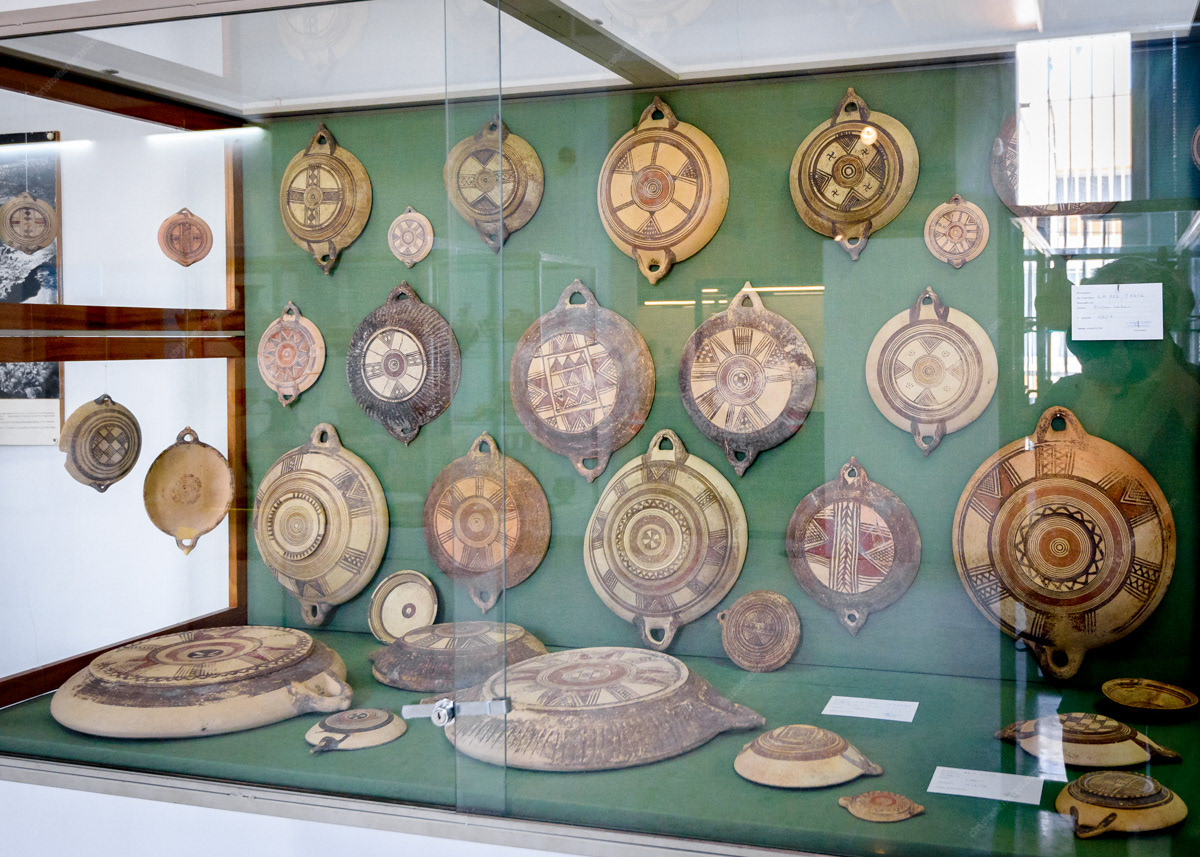
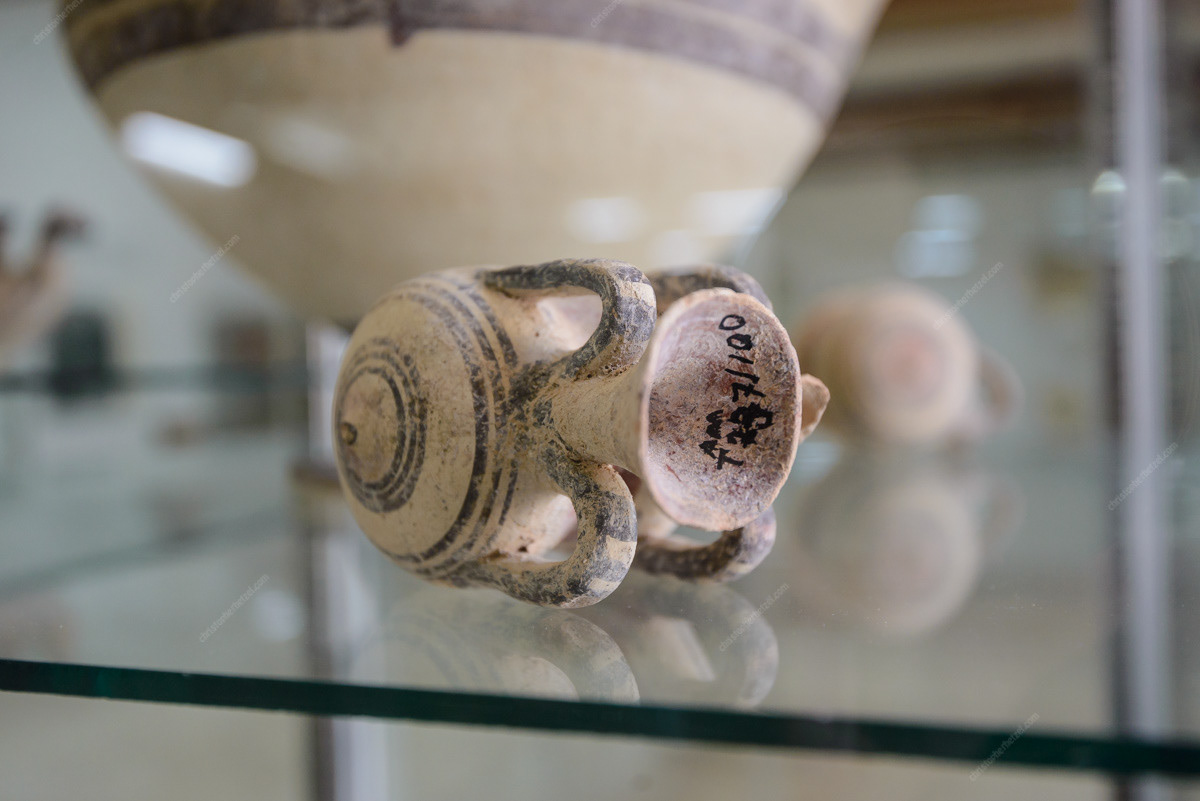
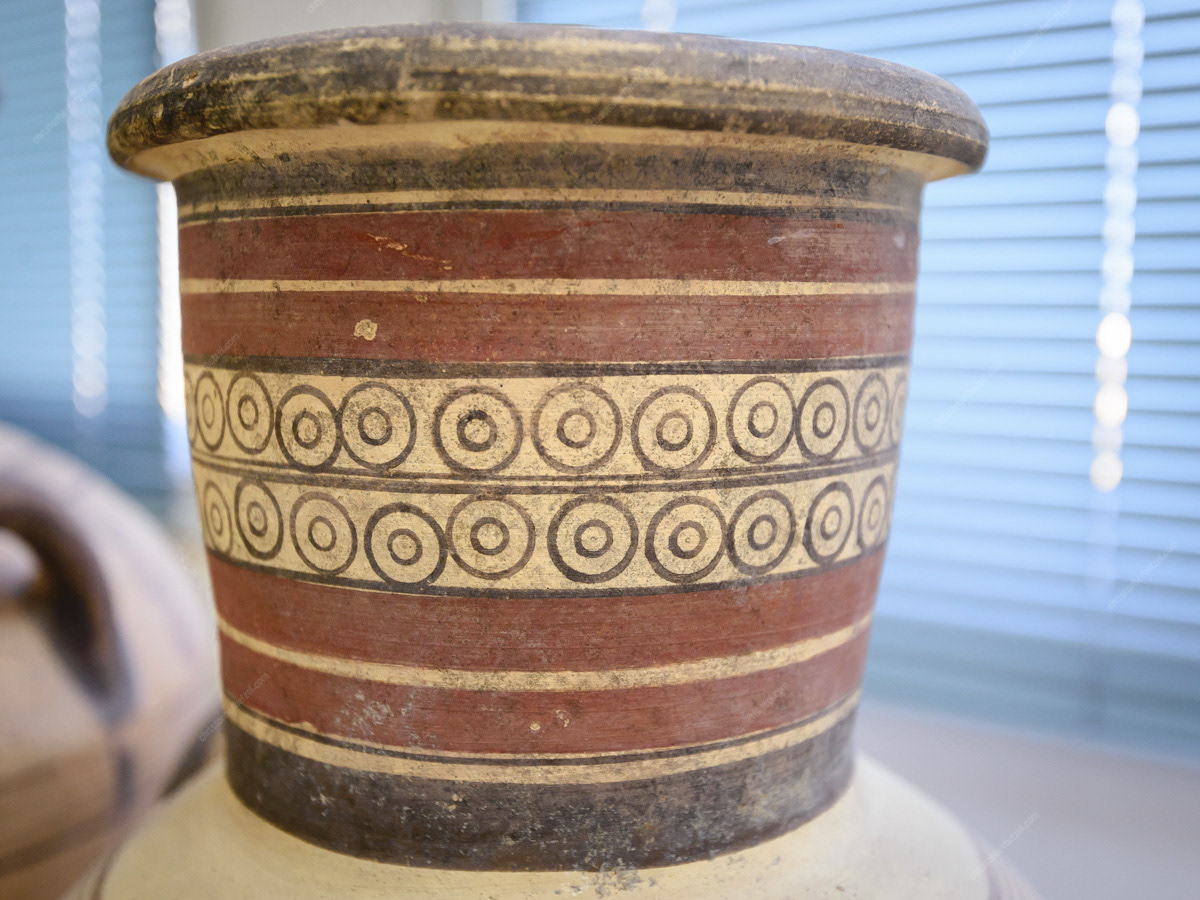
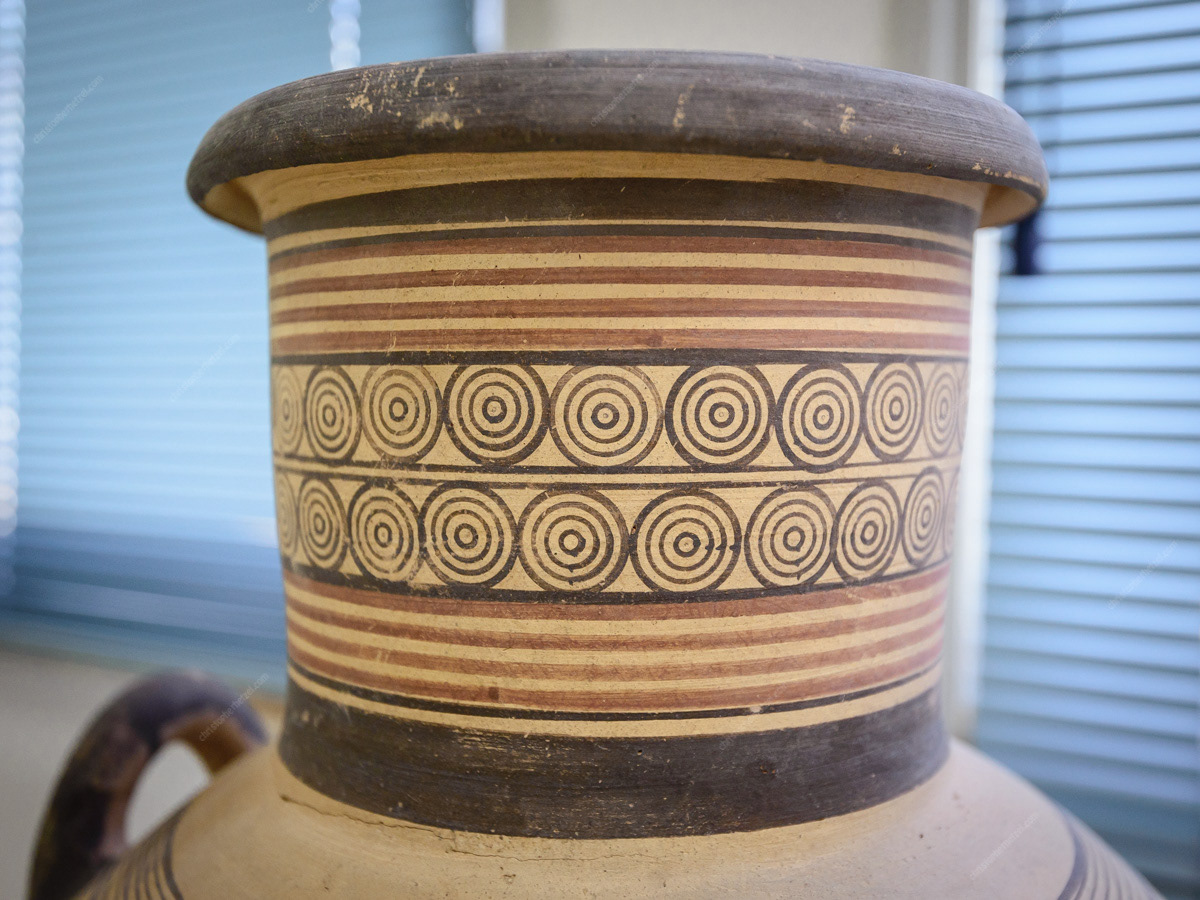
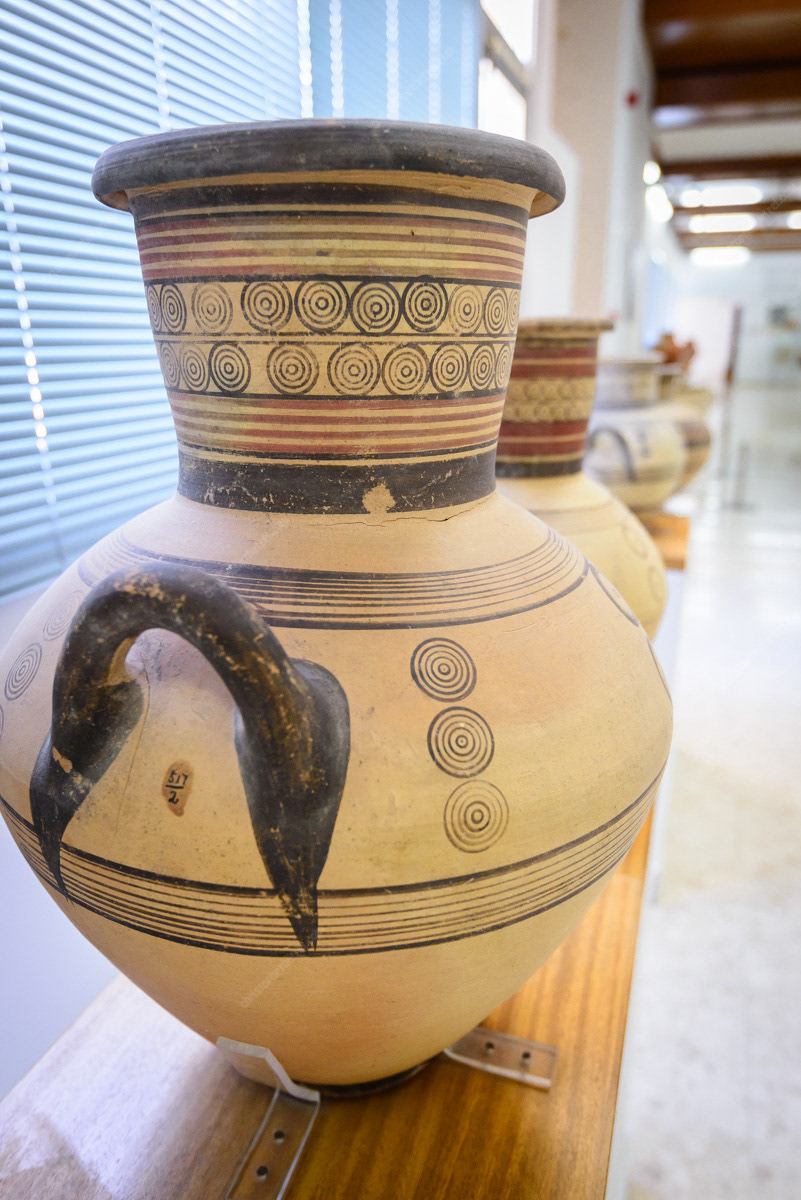
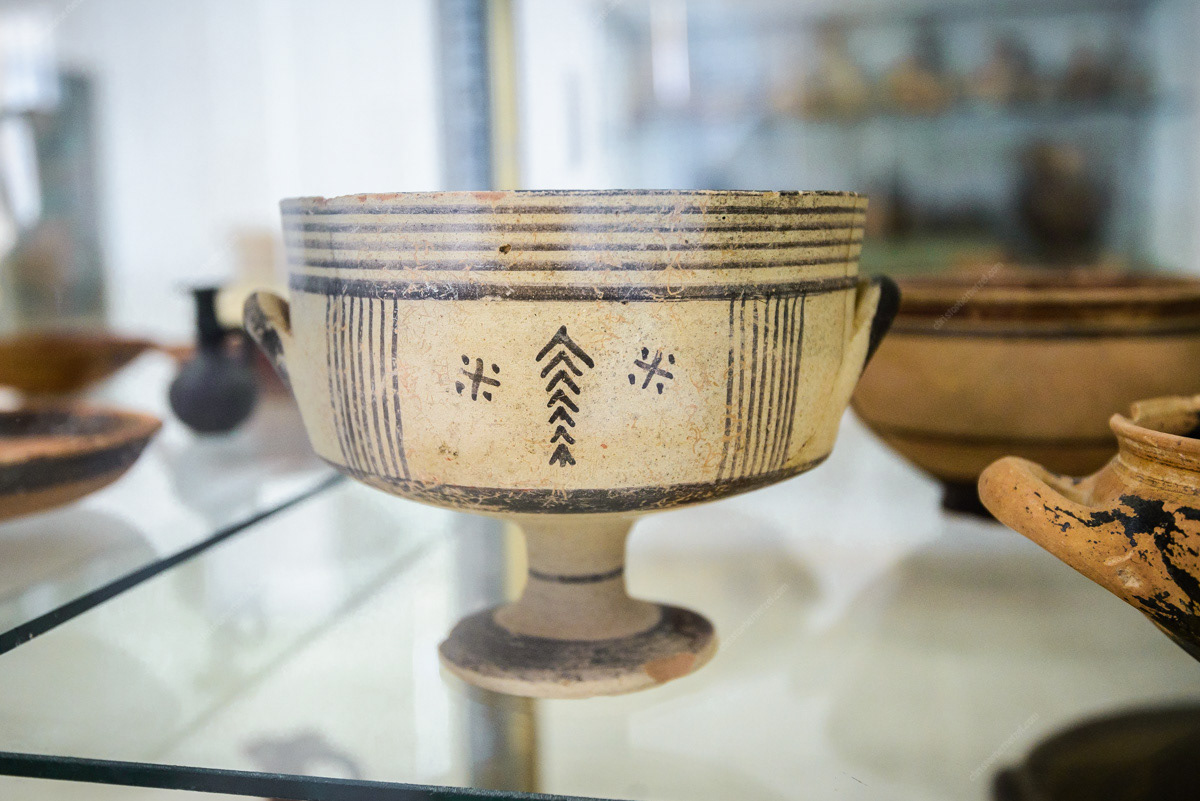
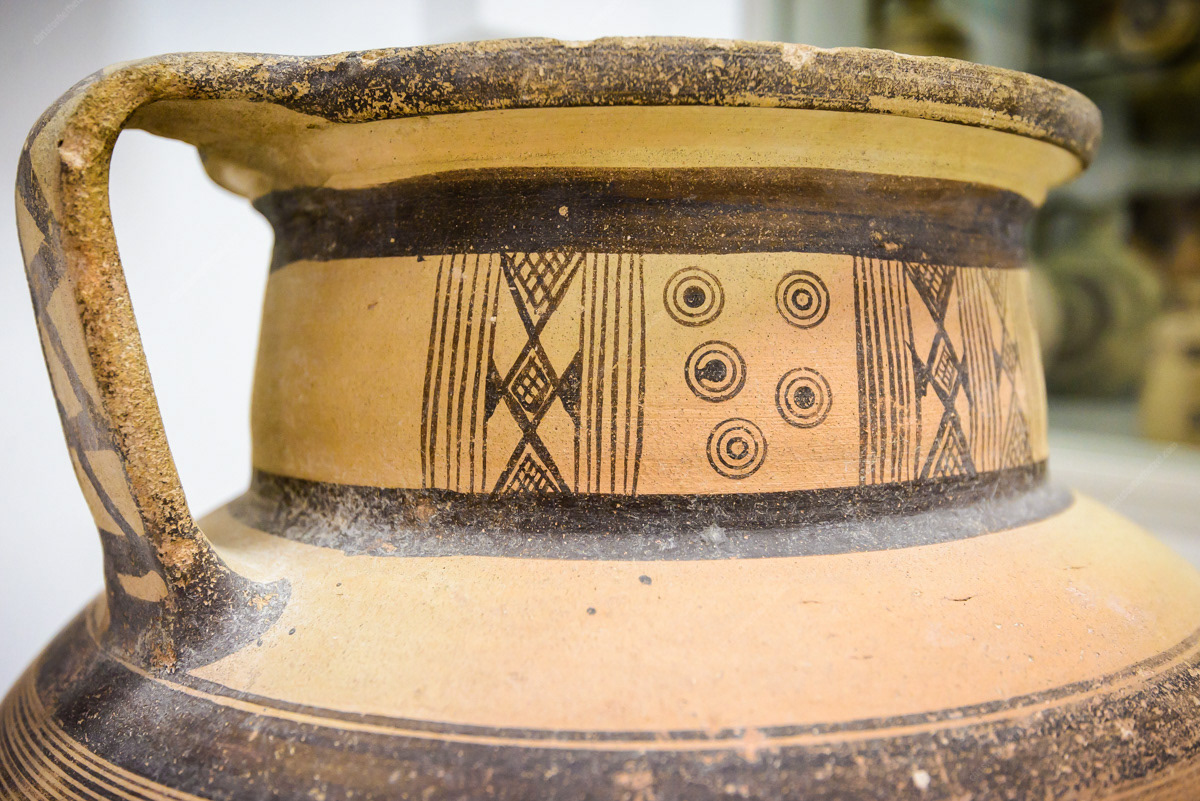
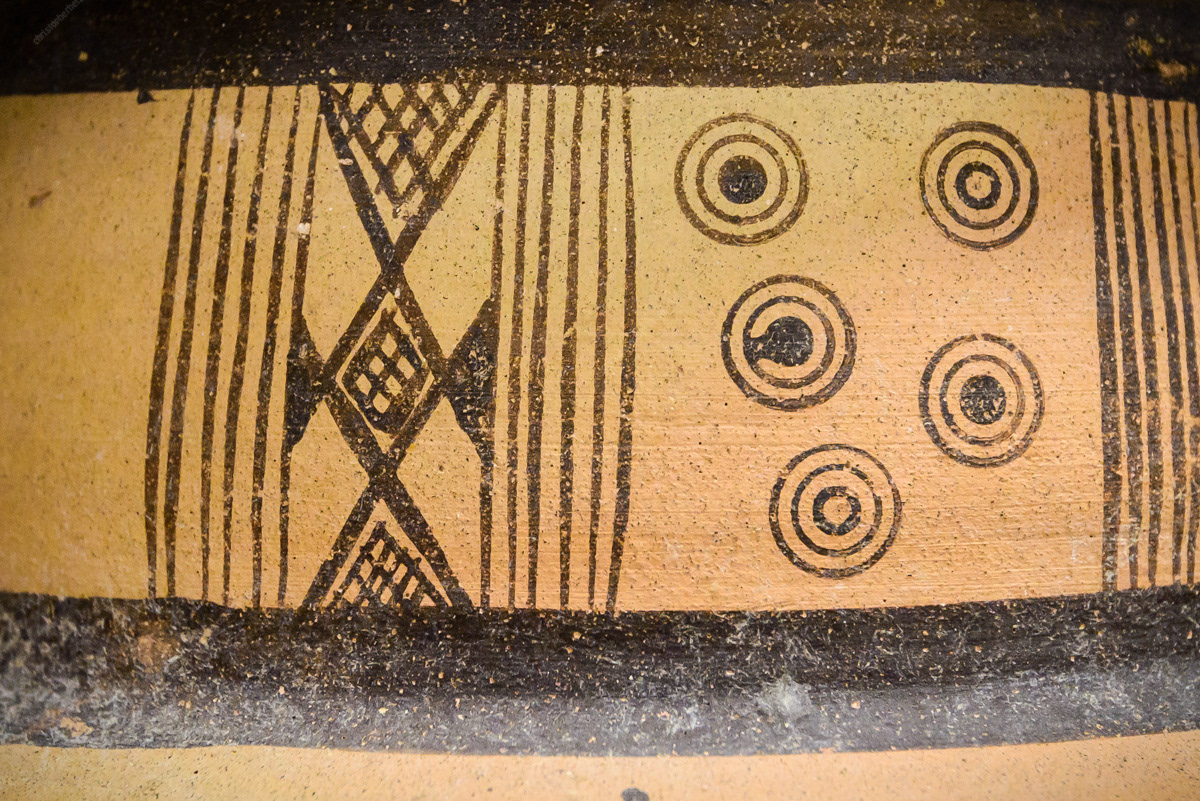
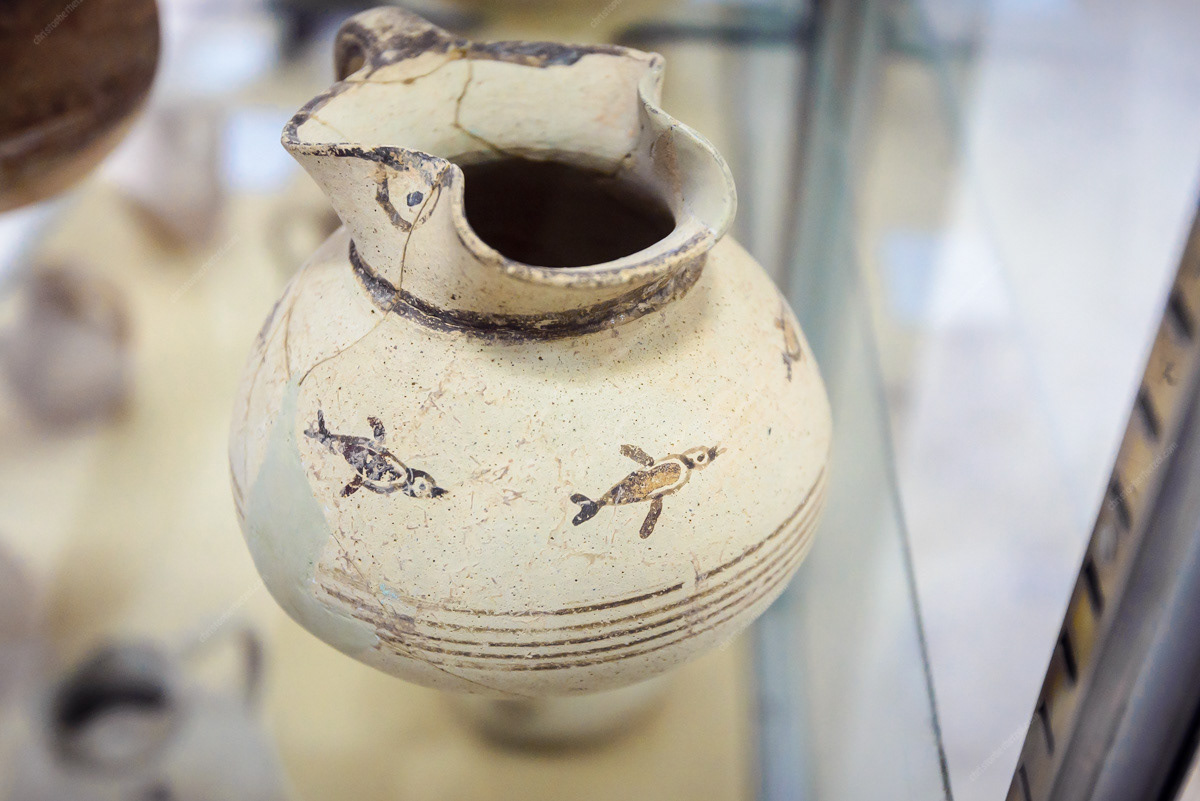
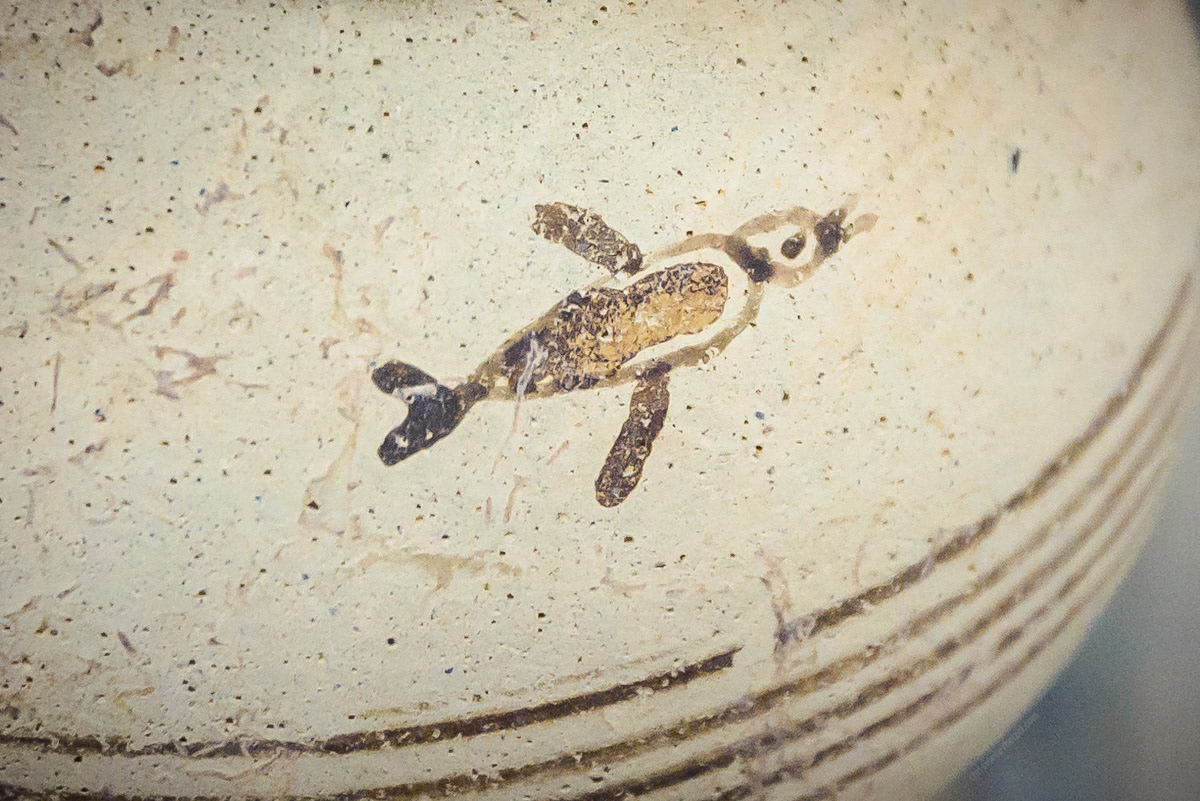
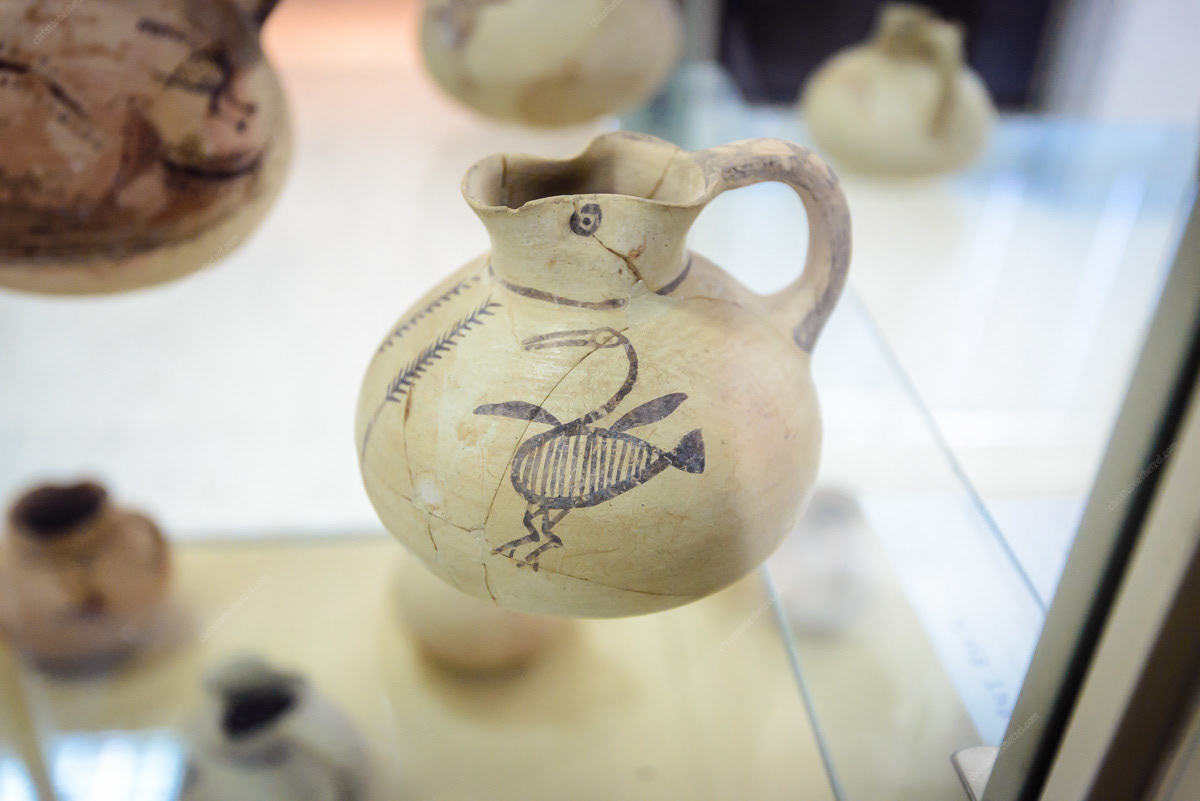
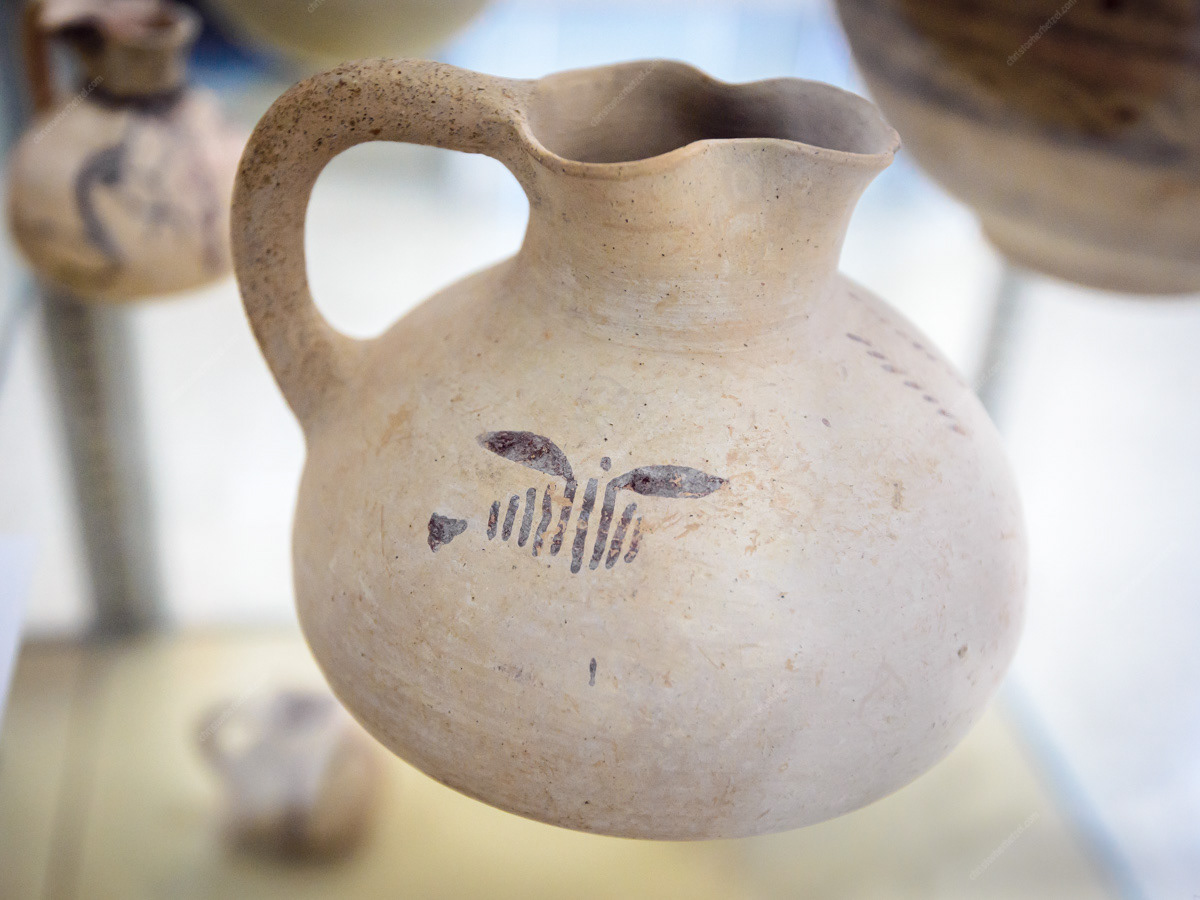
Artifact Storage Yard
Ever pondered just how many artifacts a museum contains in its collections? Or what happens to those random objects found in a field? Pictured here is the outdoor storage yard of the Archaeological Museum of the Lemesos District, located in Limassol, Cyprus. Looking for an ancient life-sized, sculpted figure missing its arms and legs? There at least a couple dozen here, all lined up in rows. Need parts of stone columns? There are hundreds.
Grouped by type, the artifacts in this storage yard may be from large, well known archaeological sites, such as the ancient cities of Kourion or Amathus, or they could simply be what someone found in their backyard (the remains of the past are everywhere!). All the artifacts are inventoried with object numbers, and all orderly placed in labeled rows and sections. And these are just the stone objects they can safely store outside.
